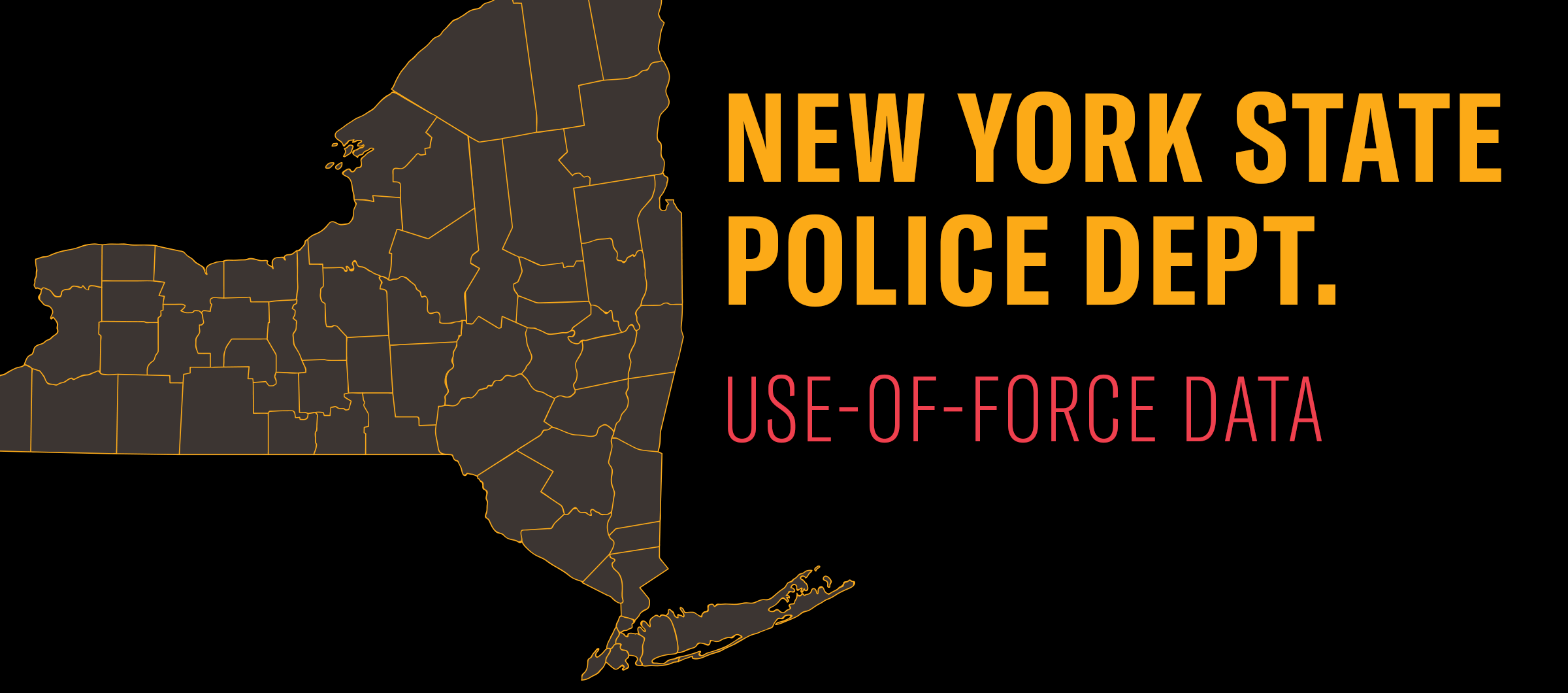New York State Police - Misconduct and Discipline Data
Civil Liberties Union

An analysis of over 5,000 records detailing NYSP use-of-force incidents from 2000 to 2020 reveals:
Our analysis shows 5,554 reported use-of-force incidents occurred between 2000 to 2020, an average of 264 per year.2 Records include 3,725 individual officers named in at least one use-of-force incident. The 393 officers who were named in five or more incidents were involved in nearly half of all use-of-force incidents. In other words, about 10 percent of the officers in the database were named in one out of every two use-of-force incidents. Most officers have only one or two incidents associated with their name.
Because the format of the use-of-force records changed significantly in 2017, the NYCLU analyzed the records from the two periods, 2000 to 2017 and 2018 to 2020, independently.
The records from 2000 to 2017 include information about 4,955 incidents that occurred between 2000 and 2017. Officers in Troop F, which operates in Rockland, Orange, Sullivan, Ulster, and Greene counties, engaged in more use-of-force incidents (756) than any other troop from 2000 to 2017, followed by Troop G (726), which operates in Albany, Schoharie, Rensselaer, Schenectady, Montgomery, Fulton, Saratoga, Washington, Warren, and Hamilton counties. Below is a map showing the use-of-force incidents by Troop from 2000 to 2017:
Officers operating in Saratoga, Warren, and Washington Counties, Troop G, Zone 2, engaged in more use-of-force incidents (339) than any other sub-area in the state, followed by officers in Rockland and Orange counties, Troop F, Zone 2 (324), and officers in Ulster and Greene Counties, Troop F, Zone 3, (309).
Nearly 45 percent of use-of-force incidents were categorized as “Physical Force – General,” a category that could include any number of discrete acts, like shoving a citizen or threatening the use of a taser or a firearm. Pepper spray and tasers were the next most common type of force used, accounting for 35 percent and 11 percent of use-of-force incidents, respectively.3 Below is a chart showing the frequency of incidents by force type:
Ten percent of use-of-force incidents arose from a mental health related response, and 12 percent came during incidents of alleged disorderly conduct. Of the 506 incidents that arose from a mental health related response, pepper spray was used in 184 incidents (36 percent), and tasers were used in 99 incidents (20 percent). Of the 1,606 use-of-force incidents that arose from a traffic stop, 513 (32 percent) included the use of pepper spray and 144 (nine percent) included the use of tasers.
An analysis of the records from 2018 to 2020 reveals that an additional 599 use-of-force incidents took place between 2018 and 2020.4 Of 599 use-of-force incidents, an officer brandished their weapon in 41 percent of incidents, used a taser in 44 percent of incidents, and used pepper spray in eight percent of incidents.
Of the 156 incidents that arose from a traffic stop, officers used tasers in 51 percent of incidents and brandished their weapons in 36 percent of incidents – extreme responses to traffic enforcement, which is commonly a non-criminal enforcement action. Officers used tasers in about 66 percent of the 86 use-of-force incidents that occurred during a “welfare check.”